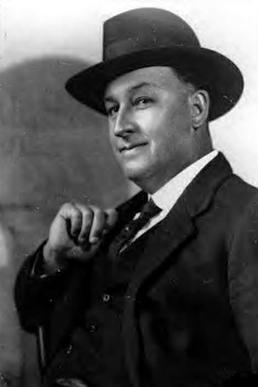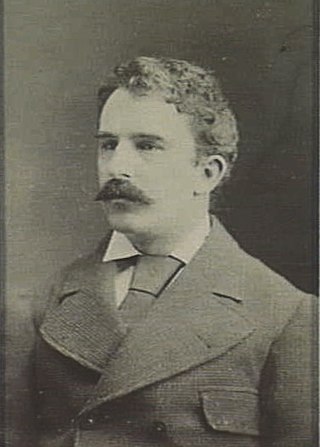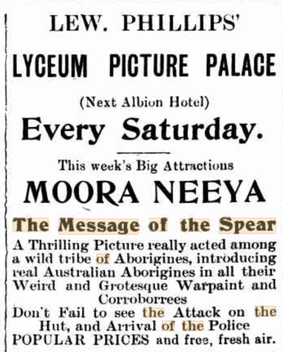
Charles Francis Laseron was an American-born Australian naturalist and malacologist.

Raymond Longford was a prolific Australian film director, writer, producer, and actor during the silent era. Longford was a major director of the silent film era of the Australian cinema. He formed a production team with Lottie Lyell. His contributions to Australian cinema with his ongoing collaborations with Lyell, including The Sentimental Bloke (1919) and The Blue Mountains Mystery (1921), prompted the Australian Film Institute's AFI Raymond Longford Award, inaugurated in 1968, to be named in his honour.

Alfred Dampier was an English-born actor-manager and playwright, active in Australia.

Alfred Rolfe, real name Alfred Roker, was an Australian stage and film director and actor, best known for being the son-in-law of the celebrated actor-manager Alfred Dampier, with whom he appeared frequently on stage, and for his prolific output as a director during Australia's silent era, including Captain Midnight, the Bush King (1911), Captain Starlight, or Gentleman of the Road (1911) and The Hero of the Dardanelles (1915). Only one of his films as director survives today.
Within Our Gates, also known as Deeds that Won Gallipoli, is a 1915 Australian silent film about Australia's fight with the German Empire and the Ottoman Empire during World War I, including the landing at Gaba Tepe during the Gallipoli campaign. The story was partly based on a play The Man Who Stayed at Home.

Captain Midnight, the Bush King is a 1911 Australian silent Western film about the fictitious bushranger Captain Midnight. It was the directorial debut of actor Alfred Rolfe. The film is based on the play of same name by W. J. Lincoln and Alfred Dampier. Captain Midnight, the Bush King is now considered lost.
The Life of Rufus Dawes is a 1911 Australian silent film based on Alfred Dampier's stage adaptation of the 1874 novel For the Term of His Natural Life produced by Charles Cozens Spencer.
The Cup Winner is a 1911 Australian silent film directed by Alfred Rolfe. It is set against a backdrop of horseracing and the finale involves real footage from the 1911 Melbourne Cup.
Cooee and the Echo is a 1912 Australian silent film directed by Alfred Rolfe. It is considered a lost film.

The Loyal Rebel is a 1915 Australian silent film directed by Alfred Rolfe set against the background of the Eureka Rebellion.

Dan Morgan is a 1911 Australian film from Charles Cozens Spencer about the bushranger Daniel Morgan. It was said to be starring "Alfred Rolfe and company". Rolfe directed three movies for Spencer, all starring himself and his wife Lily Dampier so there is a chance he may have directed this one and that it starred his wife. A prospectus for the Australian Photo Play Company said he directed it. It is considered a lost film.
Daughter of the East, also known as 'The Boy of the Dardanelles', is a 1924 Australian silent film directed by Roy Darling. It is considered a lost film.

Katherine Annabel Lily Dampier, known as Lily Dampier, was an Australian actress of stage and screen. She was the daughter of Alfred Dampier and married to Alfred Rolfe.

Will They Never Come? is a 1915 Australian film directed by Alfred Rolfe and starring Guy Hastings. It was based on a cartoon published by the Weekly Dispatch and the story "is based upon duty to one's country, in contradistinction to the younger members devoting their leisure to sport". It is considered a lost film.
Guy Hastings was an English-born actor who worked extensively in Australian theatre, radio and film.

How We Beat the Emden is a 1915 Australian silent film directed by Alfred Rolfe about the Battle of Cocos during World War I. It features footage shot on Cocos Island.
The Spirit of Gallipoli is a 1928 silent Australian film. Originally running at 5,000 feet length only 1,554 feet survive.
A Man – That's All (1916) is an Australian war film directed by Alfred Rolfe for Australasian Films.

Daniel Reynaud is an Australian historian whose work on Australian war cinema and on Australian World War I soldiers and religion has challenged aspects of the Anzac legend, Australia’s most important national mythology built around the role of Australian servicemen, popularly known as Anzacs

Moora Neeya, or the Message of the Spear is a 1911 Australian silent film which was the first Australian movie to emphasise aboriginal people or "the first full Australian aboriginal drama yet produced."













